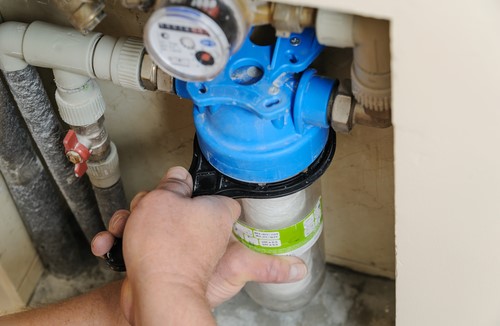Arizona boasts a robust water system and keen management practices. Arizona water supply comes from a diverse portfolio featuring the Colorado River, groundwater, in-state rivers, and reclaimed water. So how much water does the state of Arizona use per day?
Current Arizona Water Supply
According to the Arizona Department of Water Resources (ADWR), the average daily water consumption per resident is 146 gallons. The latest census puts the Arizona population at more than seven million, so the average water consumption of the state is well above a billion gallons per day.
About 20% of the state’s water supply goes to municipal use, mostly residential. As much as 70% of the residential supply goes outdoors for irrigation, swimming pools, car washing, and more. Indoor activities consume the remaining percentage.
Arizona Water Sources
The state of Arizona gets its water from a robust network drawing from multiple sources. While a portion of the Arizona water supply comes from groundwater, more than 80% of the population relies on water from the Colorado River through projects such as CAP – Central Arizona Project. Arizonans also collect water from in-state rivers and reclaimed water.
Below is an overview of the primary water sources:
1. Surface Water
The surface water comes from lakes, rivers, and streams and is a major renewable resource. Arizona’s desert climate means the amount of surface water varies from season to season and over the years. The state has various storage reservoirs and delivery systems to make the most of available surface water. Notable rivers include those set in River Salt, Gila, Verde, and Agua Fria.
2. Colorado River Water
The Colorado River is the largest source of renewable water supply in Arizona, and the state is allowed to use 2.8 million acre-feet annually. Some AZ counties like La Paz and Yuma use Colorado River water. The CAP project also delivers Colorado River water to the Pima, Pinal, and Maricopa counties.
3. Groundwater
For many years, groundwater was the primary source of water in Arizona and many other regions. Groundwater is non-renewable, so the government passed laws in 1980 to improve management. The laws were also created to help reduce the state’s reliance on the resource. Arizona still gets a considerable portion of its water from groundwater found beneath the earth’s surface in natural aquifers.
4. Reclaimed Water
Arizona has seen an increase in the reclaimed water supply as the population grows. Reclaimed water is treated to a safe quality for agriculture, industrial cooling, wildlife areas maintenance, and parks.
Arizona Water Usage Over the Years
Despite the population growth, the state of Arizona uses less water today than in the past. According to ADWR, Arizona used about 7.1 million acre-feet of water back in the 1950s, a figure that is lower than the 7.0 million acre-feet recorded in 2017. An acre-foot is about 326,000 gallons of water, or the volume needed to cover one acre of land with water.
Water demand in Arizona has gone through fluctuations over the years. Today, the demand has leveled out, although the population has grown from about 1 million to 7 million within the last 50 years.
Summary
Arizona uses water from the Colorado River and groundwater but has seen increased reclaimed water supply and surface reservoirs. To remedy this issue, the government has various compacts and strategies in the area to help preserve enough water for future generations.
Water conservation and knowledge are both critical to the state’s wellbeing. About 20% of the water supply goes to municipal use while 70% goes to agriculture. Learn more about Arizona water resources and facts by contacting an Arizona water supply company.











